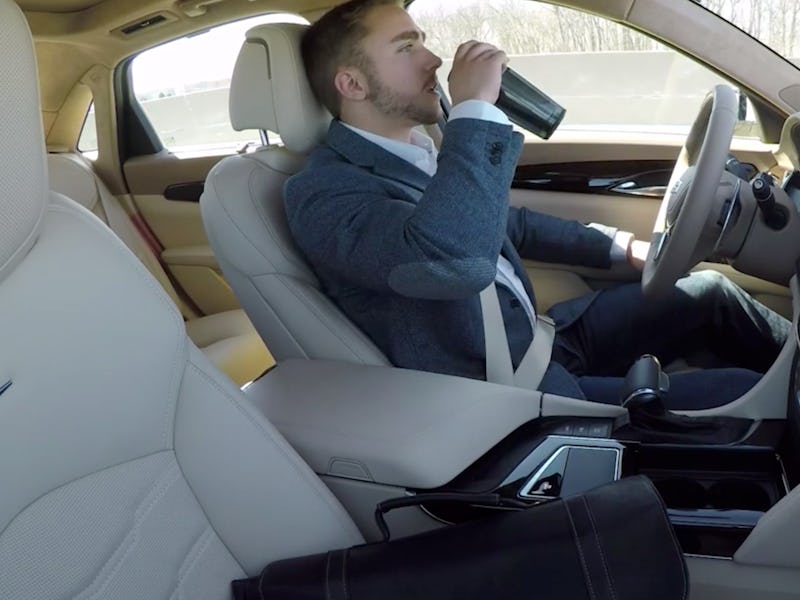General Motors just stepped into the luxury self-driving car game with “Super Cruise,” a driver-assisted technology package that will be available in Cadillac CT6 vehicles starting in 2018. The company announced Super Cruise on Monday, and a closer read of the feature’s capabilities suggests that it might bridge the gap between level two and level three autonomy, a murky divide that some experts warn could be dangerous to drivers.
For the past year, the Tesla’s Autopilot system has been the gold standard for driver-assisted or semi-autonomous technology. Despite the fact that Waymo, Uber, Ford, and pretty much every other automaker is also pursuing a self-driving system, Tesla’s early adoption and viral marketing has put it at the forefront of self-driving technology. But right now, Autopilot is firmly a level two autonomous system, which effectively means that the driver needs to keep their hands on the wheel while the system drives the car. Super Cruise promises hands-free driving, with a catch — an internal camera will monitor the driver’s attention to the road at all times.
The camera uses infrared lights to track the driver’s head position and prompts them to pay attention with an escalating system of alerts if it sees that they’re not looking at the road. If there’s no response, the automated system use “the full capability of onboard driver assistance technologies to bring the car to a controlled stop and contact OnStar to alert first responders, if necessary.”
See also: Autonomous Car Levels, with Explanations
Outside the car, Cadillac’s system has one front-facing camera and a front-facing radar. The company says it’s powered by LIDAR sensor data, but the car itself doesn’t actually have a LIDAR array. Instead, Cadillac mapped out (it claims) every divided highway in the country with LIDAR tech, and will let the car’s sensor suite do the rest of the work.
The Super Cruise system is an interesting contradiction. On one hand, it’s promising a level of driver freedom (no hands) that Tesla discourages, but on the other, it’s only offering that capability in an extremely limited scope. And it also appears to be the first system that’s trying to cross the dangerous bridge between level two and level three autonomy. The central problem with level three, as experts from around the industry maintain, is that level three autonomy does just enough driving that a driver will get careless, but not enough to stop them from crashing into something if the system encounters a situation it can’t handle. Cadillac’s system is one of the first to incorporate a full-time driver-facing camera, so it remains to be seen how effective it is in preventing accidents when a driver decides to change the radio station for too long.

The big problem here is that we don’t really have any data to figure out what the next step in autonomy will bring. Leaked disengagement reports from Uber and new DMV regulations show a little bit of the conflict between carmakers, regulators, and consumers, but until more of these systems see the road with the general public behind the wheel we won’t really know what they’re worth. We can only hope that Joshua Brown, the Tesla owner killed while running his car in Autopilot mode, is an outlier, and not a trend.
Tesla declined to comment on whether its plans for future autopilot systems included a front-facing camera, directing Inverse instead to its announcement of the automaker’s Hardware 2 suite announcement from October.
(Cadillac’s system will debut as an optional feature on 2018 CT6 sedans this fall in the United States and Canada.)
